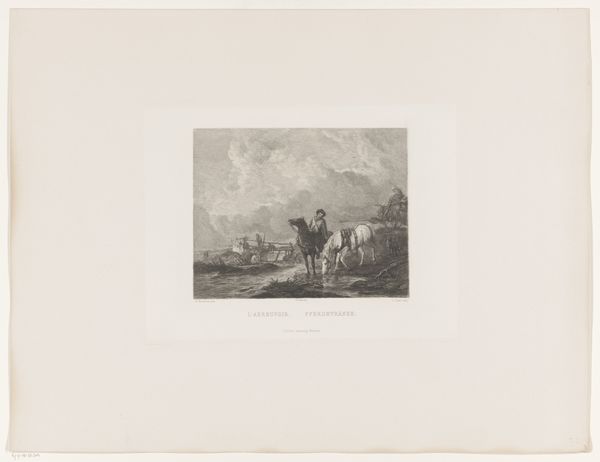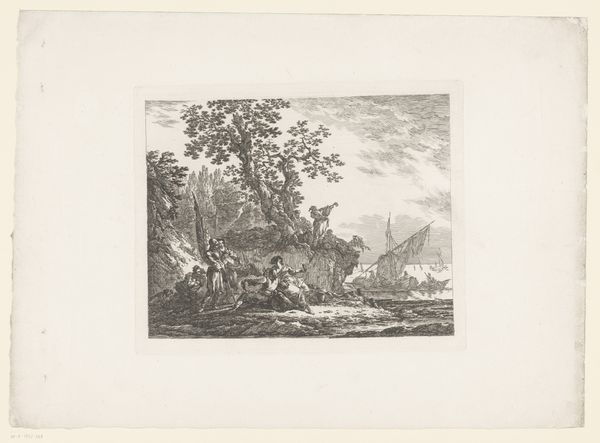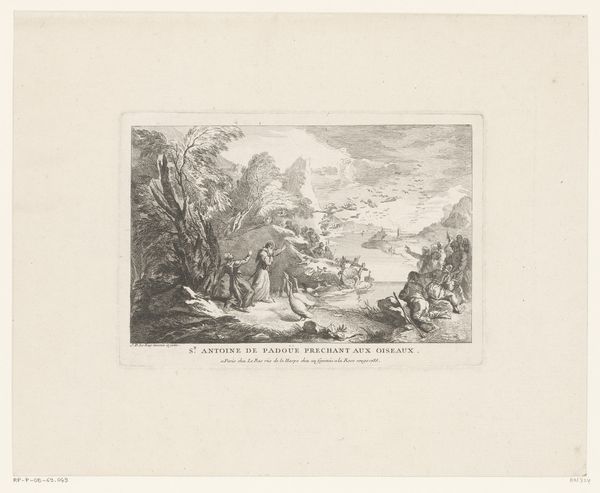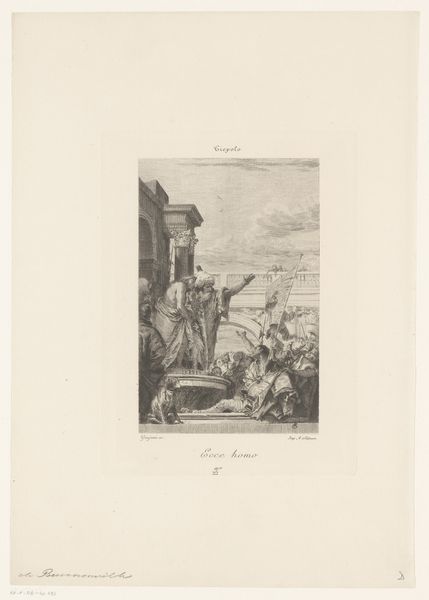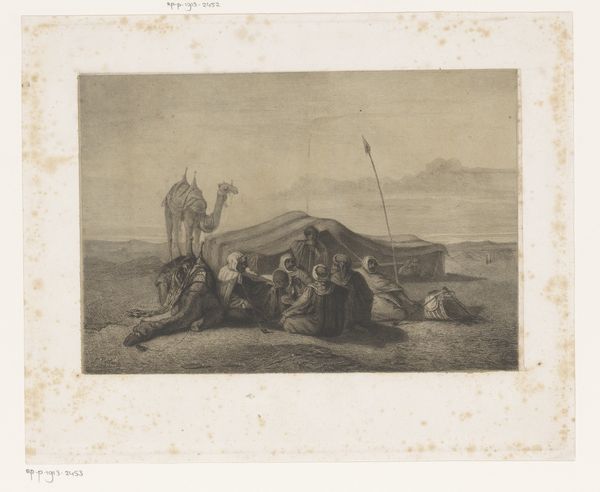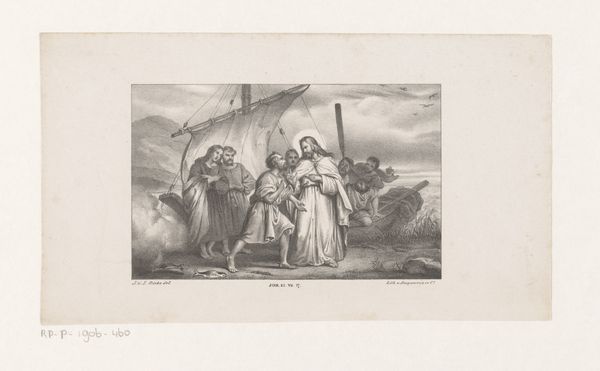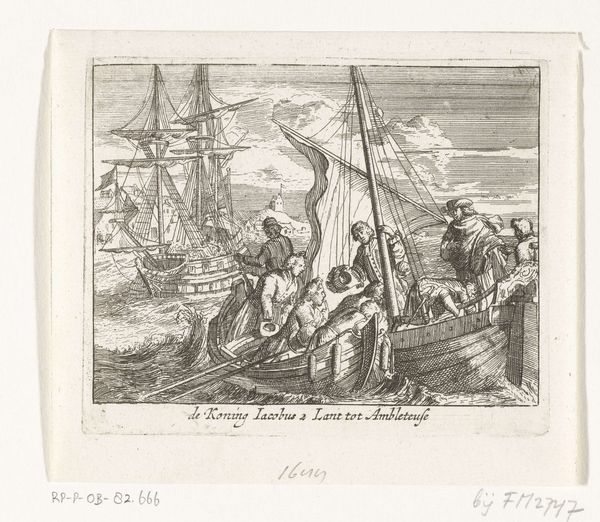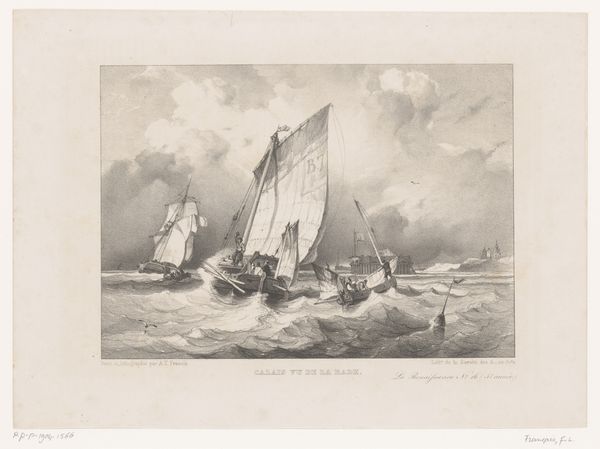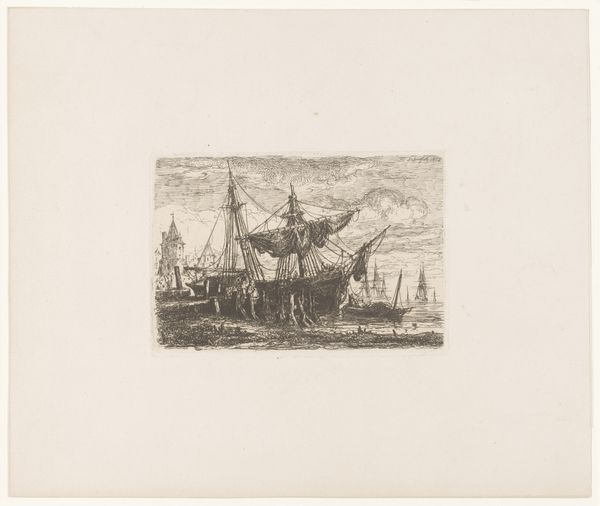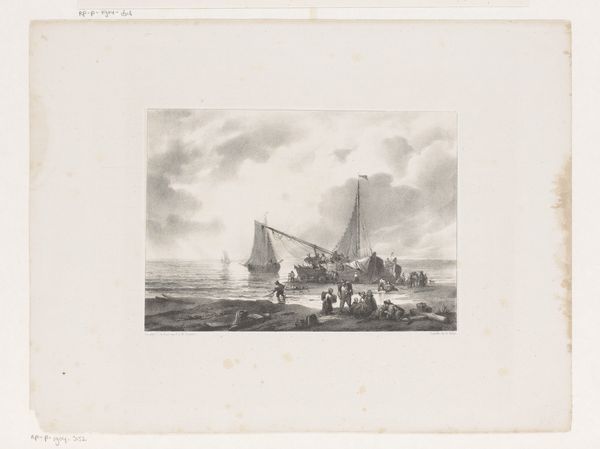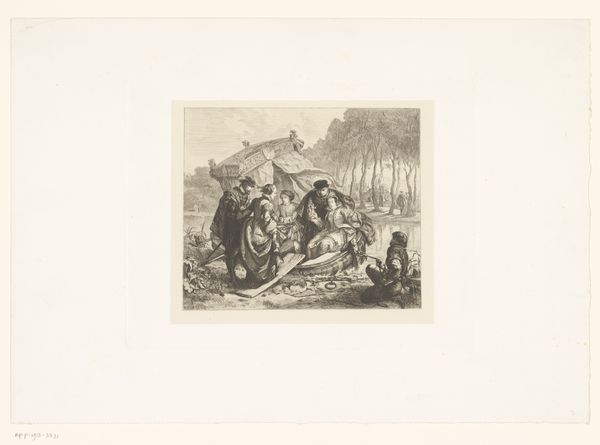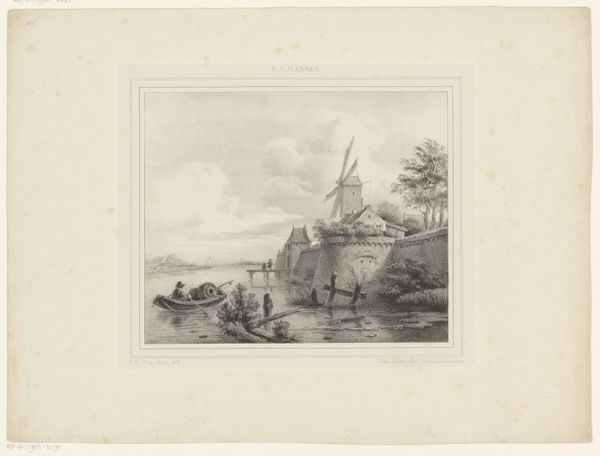
Dimensions: height 138 mm, width 187 mm
Copyright: Rijks Museum: Open Domain
Curator: Oh, isn't this dramatic? This is a print titled "Arion on the Dolphin," dating sometime between 1873 and 1894, by Henri Felix Vion. The scene is a touch chaotic but undeniably romantic. What do you make of it? Editor: My first impression is one of performativity. It’s about being watched. We have Arion in the foreground striking a pose, while a crowd on a boat bears witness. Even the dolphins feel like part of the audience. Curator: Yes! Arion was, after all, a celebrated musician and poet in ancient Greece, whose life took a rather unexpected turn. This print, rendered through the delicate art of engraving, immortalizes the pivotal moment of his rescue. Thrown overboard by pirates, legend has it that dolphins, enchanted by his music, saved him, carrying him safely ashore. It's so fantastically improbable! Editor: Improbable, yet the legend is potent with possibilities. What interests me is not just the moment of salvation, but what precedes it. The story often glosses over the violence that put Arion in the water in the first place. Pirate narratives, both then and now, have always danced around themes of exploitation and the ruthless pursuit of wealth, silencing those, like Arion, whose art challenged power. Curator: That's a keen observation. It does bring an interesting tension to the romantic rescue narrative. This version, bathed in chiaroscuro, feels less celebratory and more like a staged act for the pirates looking on. Even the dolphins, benevolent as they are, seem to be playing their part. Editor: Exactly! And if we are going to view this as a political narrative, the question we should ask ourselves is: who are the real saviors? Are the dolphins merely instruments, or do they symbolize the disruptive potential of the natural world resisting human cruelty? Curator: Hmm, I like that thought, because at the time Vion produced this piece, there was definitely rising political tensions and the working class was increasingly expressing dissatisfaction towards the elite... Perhaps these dolphins serve as avatars of the oppressed. That sounds pretty radical! Editor: Maybe. I mean, who knows what Vion really intended us to feel. Perhaps that tension—between the mythic rescue and the historical backdrop of exploitation and political conflict—is precisely where its enduring power lies. Curator: A poignant tale indeed. I feel like I am seeing it in a new light! Editor: Art history offers a way of hearing those echoes and bringing their critical music into the present.
Comments
No comments
Be the first to comment and join the conversation on the ultimate creative platform.
